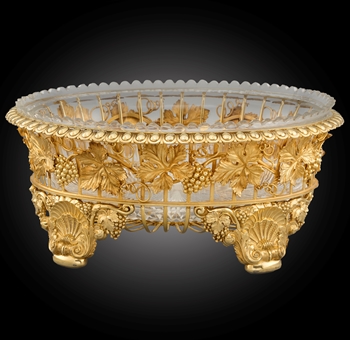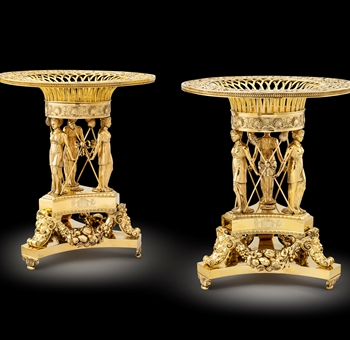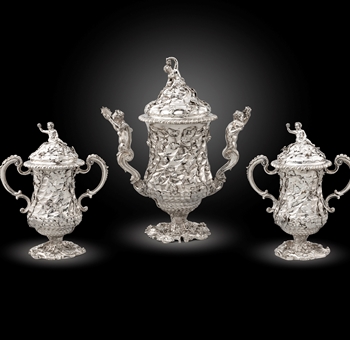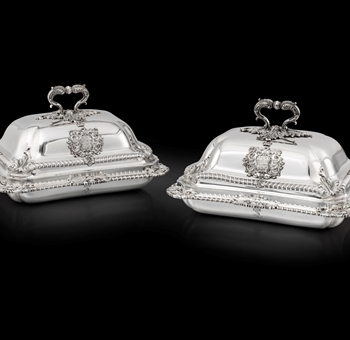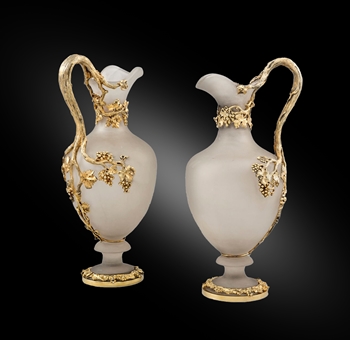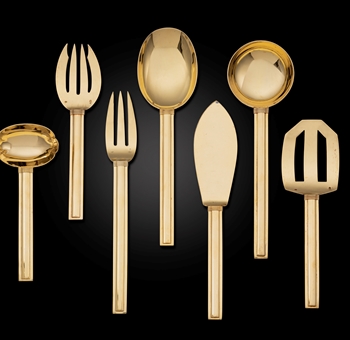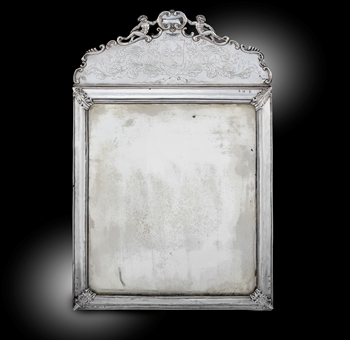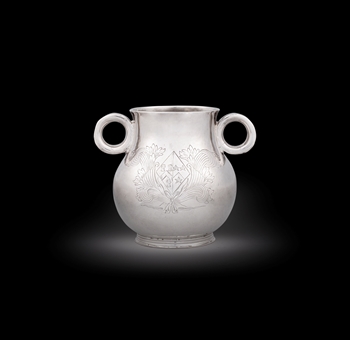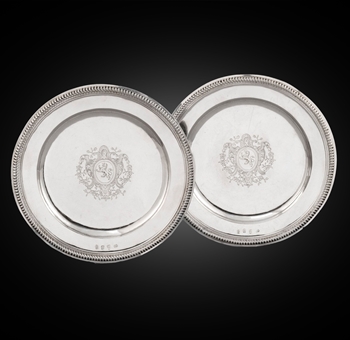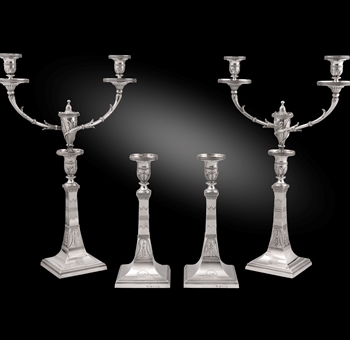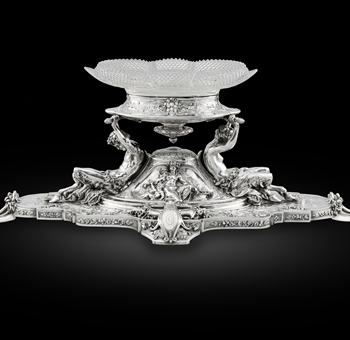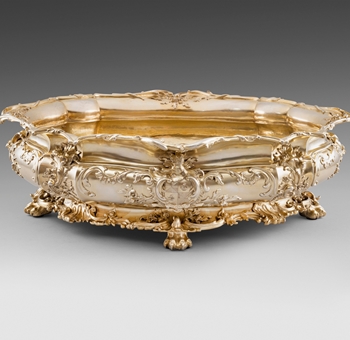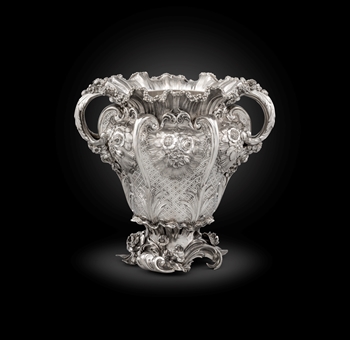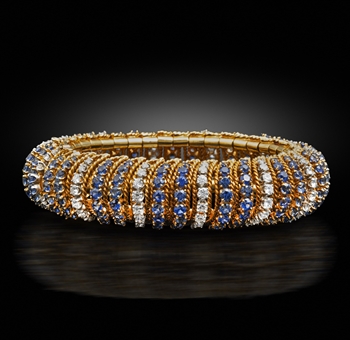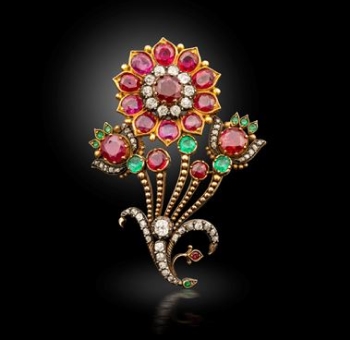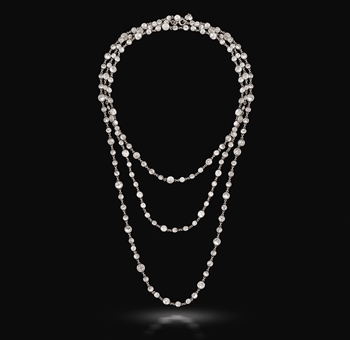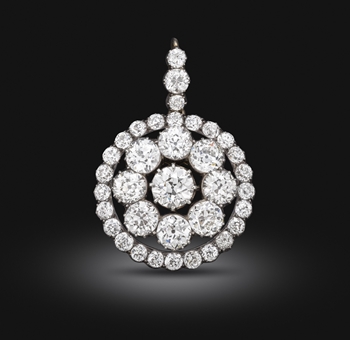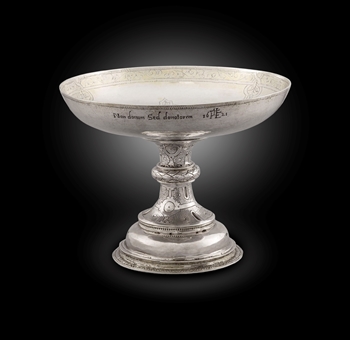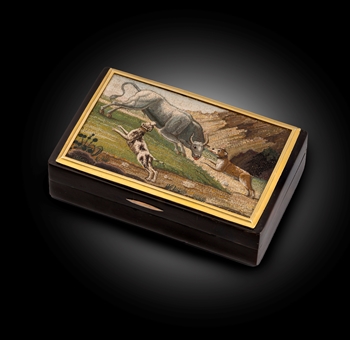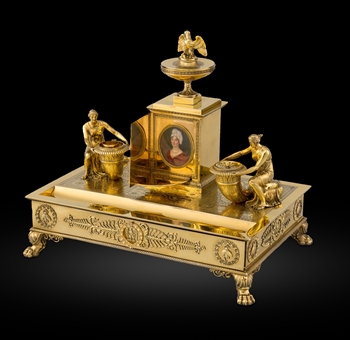 BACK TO LIST
BACK TO LIST
The Heritage and History of Odiot and its Influence on the Modern Day Silver Market

The House of Odiot was founded in 1690 by Jean-Baptiste Gaspard Odiot. The House rose to prominence under the extremely talented Jean-Baptiste Claude, Jean Baptiste Gaspard’s grandson. He received many prestigious orders from the Emperor, including Napoleon’s coronation sword and scepter and the Emperor’s campaign dinner service. Odiot was particularly influenced by the antique style and created lavish displays in silver-gilt. Odiot’s reputation spread beyond the Empire to all the courts of Europe.
 A Large French Silver-Gilt Centrepiece, mark of Maison Odiot, Paris, 1983-1992.
A Large French Silver-Gilt Centrepiece, mark of Maison Odiot, Paris, 1983-1992.
Charles Nicolas Odiot experimented with electroplating, a new technique he brought back from England in 1824. He worked in the revived rocaille style and by 1825 he was purveyor of silverware by appointment to His Majesty the King Louis-Philippe and to the Royal Family of Orleans. Charles Nicolas was succeeded by his son Gustave who revived the largest order placed with the House of Odiot, 3,000 pieces of solid gold flatware from Saïd Pacha, the Viceroy of Egypt. Gustave went on to become the purveyor by appointment to the court of His Majesty the Tsar.
The House of Odiot still functions today. Their exceptionally rich heritage has enabled the House to continue to produce the highest quality of objects. The preservation of knowledge through the ages and their extensive archives make them unique in their production. An unparalleled collection of patterns, moulds and drawings has enabled the House to produce modern day silverware from the original historic moulds and also develop new designs drawing inspiration from the archives.
“Never have gold and silver been softened and searched
by a more ingenious, more reliable and more delicate chisel”
Georges Maillard, article published in Le Figaro on January 4, 1869
At Koopman Rare Art we have some exquisite examples of Odiot’s work in silver-gilt dating between 1983-1992. A large French silver-gilt centrepiece which was made after a design circa 1817 of A-L-M Cavelier for Jean Baptiste-Claude Odiot. The circular base is cast and chased with a band of stylised foliage on a matted ground. The hemispherical bowl is supported on cast figures of Ceres, Bacchus and Fame. The bowl is applied with a band of trailing vines, dolphins and bulrushes, with Bacchic female mask and double serpent handles. This sumptuous tureen was first manufactured in 1817, as part of a set of 219 pieces commissioned by Count Demidoff. The original piece is presently exhibited at the Louvre museum.
 A pair of French Soup-tureens, covers and liners, silver-gilt, Paris, 1990, maker’s mark of Mason Odiot
A pair of French Soup-tureens, covers and liners, silver-gilt, Paris, 1990, maker’s mark of Mason Odiot
Another highlight piece in our collection is a pair of French soup-tureens, covers and liners also in silver-gilt. The pair were made in Paris, 1990. Each oval and oval base is cast and chased with a band of stylised foliage on a matted ground. The oval bowl is supported on a pair of cast winged kneeling figures of winged Victory. The bowl is applied with a band of trailing vines and the slightly domed cover is adorned with foliage and bud finial. The bases, covers and liners are further stamped ‘Odiot a Paris’ the bases further numbered ‘9025’ and ‘9026’ and dated ‘1990’.
These works are available to view in our gallery located at Koopman Rare Art, The London Silver Vaults, 53/64 Chancery Lane, London, WC2A 1QS
For all enquiries please do not hesitate to call or email on:
0207 242 7624 / info@koopmanrareart.com




